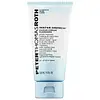What's inside
What's inside
 Key Ingredients
Key Ingredients

 Benefits
Benefits

 Concerns
Concerns

 Ingredients Side-by-side
Ingredients Side-by-side

Water
Skin ConditioningGlycerin
HumectantPropanediol
SolventDimethicone
EmollientIsononyl Isononanoate
EmollientHydroxyethylpiperazine Ethane Sulfonic Acid
BufferingPhenoxyethanol
PreservativeCarbomer
Emulsion StabilisingButylene Glycol
HumectantChlorphenesin
AntimicrobialCaprylyl Glycol
EmollientDimethiconol
EmollientSodium Hydroxide
BufferingXanthan Gum
EmulsifyingPentylene Glycol
Skin ConditioningTetrasodium EDTA
Tocopheryl Acetate
AntioxidantMenthoxypropanediol
MaskingPseudoalteromonas Ferment Extract
HumectantBiosaccharide Gum-1
HumectantSarcosine
Skin ConditioningSalicylic Acid
MaskingWater, Glycerin, Propanediol, Dimethicone, Isononyl Isononanoate, Hydroxyethylpiperazine Ethane Sulfonic Acid, Phenoxyethanol, Carbomer, Butylene Glycol, Chlorphenesin, Caprylyl Glycol, Dimethiconol, Sodium Hydroxide, Xanthan Gum, Pentylene Glycol, Tetrasodium EDTA, Tocopheryl Acetate, Menthoxypropanediol, Pseudoalteromonas Ferment Extract, Biosaccharide Gum-1, Sarcosine, Salicylic Acid
Sodium Cocoyl Isethionate
CleansingGlycerin
HumectantGlyceryl Stearate Se
EmulsifyingStearic Acid
CleansingCoconut Acid
CleansingCetearyl Alcohol
EmollientCocos Nucifera Oil
MaskingSodium Caproyl Methyltaurate
CleansingDisodium Cocoamphodiacetate
CleansingPolyglyceryl-10 Myristate
Skin ConditioningSodium Methyl Stearoyl Taurate
CleansingSodium Hyaluronate
HumectantAlthaea Officinalis Root Extract
Skin ConditioningSambucus Nigra Fruit Extract
AstringentSodium PCA
HumectantGlycol Distearate
EmollientSodium Chloride
MaskingSodium Isethionate
CleansingXanthan Gum
EmulsifyingPropylene Glycol
HumectantSodium Hydroxide
BufferingTetrasodium EDTA
Mica
Cosmetic ColorantPotassium Sorbate
PreservativeSodium Benzoate
MaskingEthylhexylglycerin
Skin ConditioningPhenoxyethanol
PreservativeSodium Cocoyl Isethionate, Glycerin, Glyceryl Stearate Se, Stearic Acid, Coconut Acid, Cetearyl Alcohol, Cocos Nucifera Oil, Sodium Caproyl Methyltaurate, Disodium Cocoamphodiacetate, Polyglyceryl-10 Myristate, Sodium Methyl Stearoyl Taurate, Sodium Hyaluronate, Althaea Officinalis Root Extract, Sambucus Nigra Fruit Extract, Sodium PCA, Glycol Distearate, Sodium Chloride, Sodium Isethionate, Xanthan Gum, Propylene Glycol, Sodium Hydroxide, Tetrasodium EDTA, Mica, Potassium Sorbate, Sodium Benzoate, Ethylhexylglycerin, Phenoxyethanol
 Reviews
Reviews

Ingredients Explained
These ingredients are found in both products.
Ingredients higher up in an ingredient list are typically present in a larger amount.
Glycerin is already naturally found in your skin. It helps moisturize and protect your skin.
A study from 2016 found glycerin to be more effective as a humectant than AHAs and hyaluronic acid.
As a humectant, it helps the skin stay hydrated by pulling moisture to your skin. The low molecular weight of glycerin allows it to pull moisture into the deeper layers of your skin.
Hydrated skin improves your skin barrier; Your skin barrier helps protect against irritants and bacteria.
Glycerin has also been found to have antimicrobial and antiviral properties. Due to these properties, glycerin is often used in wound and burn treatments.
In cosmetics, glycerin is usually derived from plants such as soybean or palm. However, it can also be sourced from animals, such as tallow or animal fat.
This ingredient is organic, colorless, odorless, and non-toxic.
Glycerin is the name for this ingredient in American English. British English uses Glycerol/Glycerine.
Learn more about GlycerinPhenoxyethanol is a preservative that has germicide, antimicrobial, and aromatic properties. Studies show that phenoxyethanol can prevent microbial growth. By itself, it has a scent that is similar to that of a rose.
It's often used in formulations along with Caprylyl Glycol to preserve the shelf life of products.
Sodium Hydroxide is also known as lye or caustic soda. It is used to adjust the pH of products; many ingredients require a specific pH to be effective.
In small amounts, sodium hydroxide is considered safe to use. However, large amounts may cause chemical burns due to its high alkaline.
Your skin has a natural pH and acid mantle. This acid mantle helps prevent harmful bacteria from breaking through. The acid mantle also helps keep your skin hydrated.
"Alkaline" refers to a high pH level. A low pH level would be considered acidic.
Learn more about Sodium HydroxideTetrasodium EDTA is the salt formed from neutralizing ethylenediamine tetraacetic acid with sodium hydroxide. It is a chelating agent and used to prevent metal ions from binding to other ingredients. This helps keep the product and ingredients stable.
Tetrasodium EDTA comes as a white solid and is soluble in water.
Xanthan gum is used as a stabilizer and thickener within cosmetic products. It helps give products a sticky, thick feeling - preventing them from being too runny.
On the technical side of things, xanthan gum is a polysaccharide - a combination consisting of multiple sugar molecules bonded together.
Xanthan gum is a pretty common and great ingredient. It is a natural, non-toxic, non-irritating ingredient that is also commonly used in food products.
Learn more about Xanthan Gum